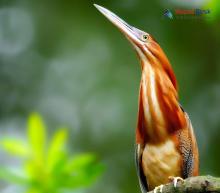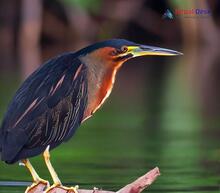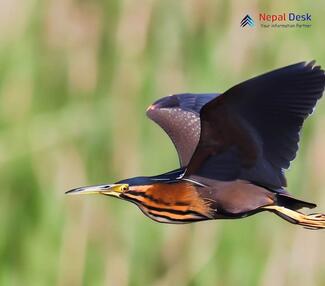Nepal, a country known for its breathtaking landscapes and rich biodiversity, is home to an incredible variety of bird species. Among these captivating creatures is the lesser-known subfamily Botaurinae. Here, we'll delve into the bird profile of Botaurinae and explore their unique features, habitat, and the importance of their presence in Nepal's diverse ecosystem.
Unraveling the Mysteries of Botaurinae
Belonging to the family Ardeidae, which includes herons, egrets, and bitterns, the Botaurinae subfamily consists of elusive marsh birds that often go unnoticed because of their secretive nature and remarkable camouflage abilities. These medium-sized wading birds can be identified by their elongated necks, sharp beaks, and stocky bodies covered in cryptic brownish plumage.
Their impressive feather patterns allow them to blend in seamlessly with their surroundings, making it difficult for predators – and even bird enthusiasts – to spot them. When alarmed or disturbed, they display a fascinating behavior known as the "bittern stance," where they raise their beak skyward and stretch out their necks while standing motionless to further camouflage themselves amidst the surrounding reeds.
The Lush Habitats of Nepal's Botaurinae Birds
The wetlands in Nepal provide an ideal habitat for these enigmatic birds. The country's numerous marshes, swamps, and paddy fields offer much-needed nourishment and shelter for Botaurinae birds as they go about hunting for insects, crustaceans, small fish, and amphibians with precision.
Botaurinae birds primarily inhabit regions ranging from lowland Terai plains to the foothills of the mighty Himalayas. Some well-known birdwatching areas where you can possibly catch a glimpse of these hard-to-find birds include the Chitwan National Park, the Koshi Tappu Wildlife Reserve, and the wetlands around the Rupandehi District.
Contributions to Nepal's Thriving Ecosystem
The presence of Botaurinae birds is a clear indicator of healthy wetland ecosystems that support a thriving biodiversity in Nepal. These wading birds act as excellent indicator species for assessing the state of wetlands, as they largely rely on water quality, abundance of prey, and dense vegetation for their survival.
Conservation efforts have been increasingly focusing on preserving these invaluable habitats not only for Botaurinae birds but also the myriad other species that call these areas home. This includes careful management of agriculture, industries, and urban developments near wetlands to prevent interference with natural bird populations.
In Conclusion
The enigmatic Botaurinae subfamily is just one of many fascinating bird species found in Nepal, reflecting the outstanding diversity and richness of the country's wildlife. By raising awareness about these birds and their habitats, we can further contribute to the preservation and appreciation of Nepal's unique biodiversity. So next time you venture into Nepal's wetlands, keep an eye out for these masters of disguise – you might just be rewarded with a rare glimpse into their intriguing world.





